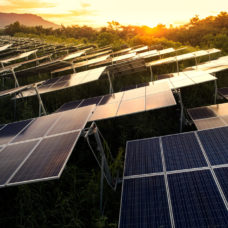A recent paper in the journal Nature Nanotechnology described how artificial sunflowers, also known as SunBot, can harvest energy from the sun.
Scientists have made several major solar energy breakthroughs in recent times. From replicating the methods used by microalgae to inventing biogenic solar cells, we now have novel ways of harvesting solar power.
Now, a team of researchers has added one more to the growing list. It involves creating solar panels from rows of tiny artificial sunflowers.
Like the natural sunflowers, the human-made material can continually adjust its position to face the sun as it moves across the sky. That way, it can capture 90 percent of available sunlight.
Here’s how it works.
Creating Artificial Sunflowers to Harvest Sunlight
The researchers developed the stem of each SunBot using a material that reacts to light, with an energy harvesting “flower” at the top. The flowers are made from the same standard light-absorbing material found in current solar cells.
After assembling the solar panel, each SunBot becomes is less than 1 millimeter wide.
So, as sunlight touches the device’s stem, it heats up and shrinks. And in turn, the stem bends and points the artificial sunflower towards the light.
The bending then creates a shadow, which cools the material and stops the shrinking. That way, the stem stops bending when the SunBot aligns with the light.
In a test, the researchers built artificial sunflowers using bendy and non-bendy materials. They discovered that the panel with bendy stems harvested up to 400 percent more solar energy that its non-bendy counterpart.
A researcher at the Eindhoven University of Technology in the Netherlands, who wasn’t involved with the work, Albert Schenning, said:
“Almost everyone working in the field of responsive or smart materials gets inspiration from nature. This is a good proof of principle.”
According to the researchers, this is the first artificial material capable of phototropism. Aside from optimizing future solar panels, this technology could also power robots and also desalinate water.



















Comments (0)
Least Recent